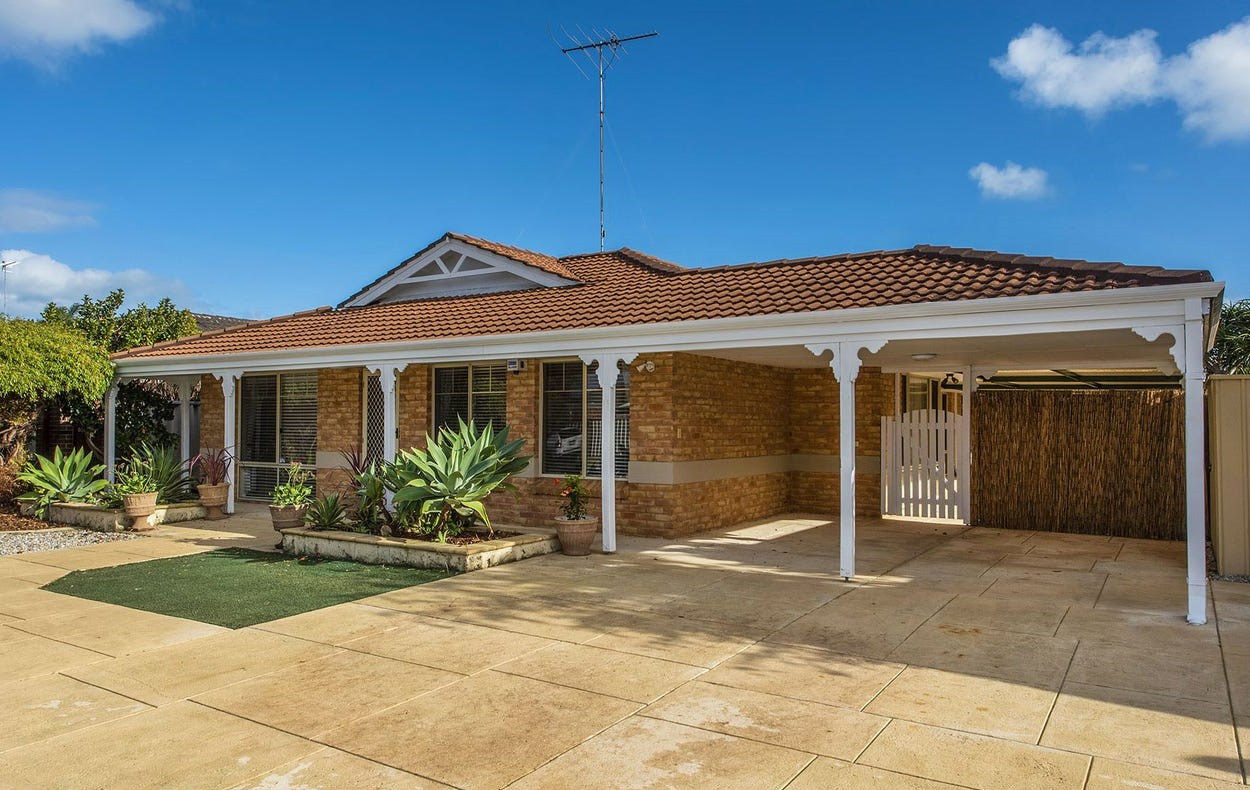
Tax Deductions On Your Investment Property: What You Can Claim
Smart investors know that even small difference in their bottom line can have a big impact over time on their return.
And tax deductions are one of those powerful tools they have to increase their returns.
The Australian Tax Office (ATO) allows you to deduct a wide range of expenses related to your investment property, and understanding these rules can significantly increase your cash flow and make your investment more successful.
In this guide, we’ll break down the most important deductions that will show you exactly how you can lower your tax bill.
Depreciation of Property and Assets
Understanding depreciation is essential when it comes to your investment property—it essentially acknowledges that just like almost everything else, properties and their components lose value as time goes by.
This decrease in value, interestingly, isn’t just a financial downside; it offers a silver lining in the form of tax deductions.
So when we talk about depreciation for investment properties, there are two primary routes you can take:
The Capital Works Deduction (Division 43)
This deduction is all about the property’s structure itself – think along the lines of walls, roofs, and any long-lasting renovations.
For example, if the building of your investment property cost $500,000 to construct, the Australian Tax Office (ATO) allows a yearly deduction of 2.5% of this cost over a span of 40 years. That works out to a tidy sum of $12,500 every year which can be tax-deductible.
Note: You should remember that this particular deduction is typically applicable to properties constructed post-September 15th, 1987.
One of the best parts about the capital works deduction is that it’s a non-cash deduction. This means you don’t need to outlay cash each year to benefit from it. Instead, it can be used to lower the taxable portion of your income seamlessly.
Plant and Equipment Deductions (Division 40)
This segment consists of items within your property that are more easily replaced or have a shorter lifespan—like air conditioning units, kitchen appliances, and even the carpet under your feet. The ATO provides specific rates for depreciating these items and tells you how much you can deduct annually.
To ensure you’re leveraging every possible deduction under this category, engaging a quantity surveyor to craft a comprehensive tax depreciation schedule is a smart move. This document gives a detail of all deductions you’re entitled to, for both the property’s structure and its contents.
For instance, installing a new carpet costing $2,000, with an expected lifespan of 10 years, permits an annual deduction of $200.

Loan Interest
Loan interest is a significant deductible expense while investing in property. It is important to understand that you can only deduct the interest part of your mortgage payments, not the principal repayment itself.
Take Alex’s scenario, for instance. He takes out a loan of $450,000 at a 3% interest rate. Doing the math, the annual interest comes to $13,500. This figure is fully deductible within the same financial year, provided his property is either rented out or ready for tenants.
But the situation gets a bit complicated when a loan is used for both personal and investment purposes. In such instances, you can only deduct the interest that pertains to the investment aspect of the loan.
In the above example, let’s say Alex uses 80% of his loan for the investment property and the remaining 20% for personal reasons. In this case, he’s able to deduct 80% of the interest. But Alex should keep in mind that he needs to have all the proofs and documentation to back this claim.
Moreover, for those who choose to prepay their investment loan’s interest, there’s an opportunity to claim a deduction for the entire prepaid amount in the same tax year. This can be a good approach to manage taxable income more effectively.
Repairs and Maintenance
Think of repairs and maintenance as giving your property a touch-up – fixing things that break or wear out over time. The great news is that the money you spend on keeping everything in working order can usually be claimed back when you do your taxes.
It’s pretty straightforward – if you’re fixing existing features of your property, like patching up a leaky roof or replacing a busted window, that’s considered a repair, and you can claim those costs right away.
On the other hand, if you’re adding something new or upgrading – say, swapping out an old kitchen for a fancy new one – that’s an improvement.
Management and Legal Fees
Running a rental can get complicated, and sometimes you need to bring in property managers, lawyers and accountants. But the silver lining is you can often deduct their fees from your taxable income.
A property manager can be a lifesaver, dealing with tenant issues and maintenance so you don’t have to. And the fee you pay them? Totally deductible.
Say you hire a property manager who charges 7% to look after your rental which brings you $26,000 a year. You can write off $1,820 for their services, which will reduce the amount of your income that’s taxed.
Legal and accounting fees are also a part and parcel of property investment. And yes, you guessed it – these costs can also be deducted. For instance, you shell out $1,100 in legal fees over a tenant dispute and another $800 for an accountant. Since these expenses are all about keeping this rental business running smoothly, they’re deductible.
Advertising for Tenants
Finding the right tenants is key to making your rental property work for you. Good news: when you spend money on advertising, you’re not just shouting into the void. The Australian Tax Office (ATO) has your back and lets you deduct these costs from your taxes. But not all ad campaigns are created equal. Let’s look at an example:
When a property owner, let’s call her Isabella, allocates $650 towards a comprehensive digital marketing campaign targeting potential tenants, she’s not just spending on ads. She’s investing in the visibility and desirability of her property. This approach might include:
- Professional photography to showcase the property in the best light.
- Listings on premier rental platforms to maximize exposure.
- Social media advertising to reach a broader demographic.
This $650 investment qualifies as a fully deductible expense. More importantly, it is a good way to fill vacancies quickly and reduce downtime between tenants.
CHAT TO US
BOOK A CALL WITH OUR EXPERTS! ALL YOU NEED IS $65,000
With $65,000 in savings or equity, you can begin or grow your investment portfolio with high-growth properties in Australia's strongest property markets.
Utilities and Council Rates
These expenses, when covered by the landlord, are not merely operational costs but deductible items that can offset rental income. Utilities and council rates present another area where nuanced understanding can lead to optimized tax outcomes.
Let’s say Lucas, pays $1,600 in council rates and $850 in water charges over the year for his rental property. The direct deductibility of these expenses from rental income is straightforward, but the strategic element lies in how Lucas manages these costs:
- Regular review of utility services for potential savings.
- Investment in water-efficient fixtures to reduce water consumption and costs.
- Detailed documentation and timely payment of these expenses to ensure full deductibility.
Lucas’s approach ensures that he can claim these expenses to minimize outgoings and maximize tax deductions.
Insurance
Insurance safeguards any investment property by covering potential risks to the building, contents, and liability. Beyond its protective capacity, insurance premiums also offer a tangible tax deduction opportunity, thereby reducing the property’s taxable income.
Let’s say, you invest $1,300 annually in a comprehensive landlord insurance policy, encompassing building, contents, and liability coverage. Now you chose this policy to provide broad protection, including tenant damage, loss of rent, and public liability.
This $1,300 premium is a direct deduction against your rental income.
Pest Control
Effective pest control is important for maintaining the quality and habitability of rental properties. The Australian Tax Office (ATO) recognizes pest control expenses as fully deductible as they play a big role in preserving the property’s condition.
Example: Michael allocates $450 yearly towards professional pest control services as a part of a preventive maintenance plan aiming to protect his property from common infestations such as termites, rodents, and cockroaches.
By documenting and scheduling these services during tenant turnover or in coordination with property inspections, Michael ensures a pest-free environment for his tenants and also ensures his eligibility to claim these expenses as deductions.
Bank Charges
Bank fees associated with the mortgage or finance products of an investment property represent another deductible expense category. These can include loan service fees, annual package fees, and loan establishment fees over time.
Let’s talk about Sophia. Over the year, she finds herself paying $270 in bank fees connected to her investment property’s mortgage. This isn’t just for the mortgage itself; it includes an annual package fee that gives her a break on the cost by bundling her loan with other banking services. Sophia is on top of her game, keeping track of every dollar spent on these fees, and here’s why: she knows that come tax season, she can deduct these costs from her rental income, effectively lowering the amount she’ll be taxed on.
But Sophia doesn’t stop there. Every year, she takes a close look at her mortgage deal to make sure it’s still the best choice for her situation. This approach doesn’t just help Sophia save money in the short term—it ensures she’s set up for financial success in the long run, maximizing her deductions and keeping her investment profitable.
Gardening and Cleaning
Gardening and cleaning services can maintain the aesthetic appeal and habitability of your investment property and at the same time, represent deductible expenses that can lower your taxable income.
Sophia also spends $1,600 towards annual gardening and cleaning for her property. This includes regular lawn maintenance, garden upkeep, and professional cleaning services between tenancies. As this expenditure enhances the property’s appeal it is also fully deductible, providing her a direct way to reduce her taxable rental income.
Stationery, Phone, and Internet Expenses
The operational management of an investment property often requires the use of communication and administrative tools, including stationery, phone, and internet services. A portion of these expenses directly related to property management activities is deductible.
Let’s say you spend an average of $2,200 annually on internet and phone bills. If 25% of this usage is dedicated to managing the investment property, you can claim $550 (25% x $2,200) as a deductible expense against you rental income.
To maximize the deductibility of these expenses, you have to keep a detailed records of your communication.
Capital Works Deductions
Capital works deductions, also known as building write-offs, cover the depreciation of structural improvements and renovations over time. These deductions are a long-term strategy for reducing taxable income through the property’s physical enhancements.
If you decided to have a substantial renovation of your property’s kitchen and bathroom at a total cost of $22,000, then under ATO rules, this capital expenditure is not immediately deductible but is depreciated at a rate of 2.5% annually over a 40-year period. This equates to an annual deduction of $550 which can give you a prolonged benefit that incrementally reduces you taxable income.
Prepaid Expenses
Prepaying certain property-related expenses can offer immediate tax benefits by accelerating deductions into the current fiscal year.
If you decide to prepay the interest on your investment property loan for the upcoming 12 months, totaling $2,600, you can claim the full amount as a tax deduction in the current year, rather than spreading it out over the actual period of the loan interest. This strategy is particularly beneficial in a year where you might have higher taxable income, as it provides an opportunity to reduce your overall tax liability effectively.
Takeaway
Many investors miss out on these benefits simply because they’re not sure what’s allowed by the Australian Tax Office (ATO).
Being proactive with your investment goes a long way. Regularly reviewing your insurance and mortgage options not only helps you stay protected and save money, but it can also lead to better tax outcomes.
With this knowledge, you can move beyond hoping your property makes money and actively work towards generating positive cash flow.
Here’s the key:
Keeping good records and talking to a professional can make all the difference. They’ll help you maximize your investment’s potential while ensuring you comply with ATO regulations. Remember, financial knowledge is power, and in this case, it can translate to real savings and a stronger investment portfolio.
WHAT OUR CLIENTS THINK OF US
 Gemma Kim2024-04-04We worked with TIA to purchase our first investment property. We were a bit nervous to take the leap initially. However, the team were so helpful and supportive throughout the whole process. The process was clear and informative at every step. The team were readily available to answer questions. Thanks to the team and their expertise we have walked away with an incredible investment property which is already showing signs of return and growth after a very short period of time. We have full confidence in TIA and we look forward to working with them again for the next investment opportunity.
Gemma Kim2024-04-04We worked with TIA to purchase our first investment property. We were a bit nervous to take the leap initially. However, the team were so helpful and supportive throughout the whole process. The process was clear and informative at every step. The team were readily available to answer questions. Thanks to the team and their expertise we have walked away with an incredible investment property which is already showing signs of return and growth after a very short period of time. We have full confidence in TIA and we look forward to working with them again for the next investment opportunity. Yechan Kim2024-04-04Amazing service and attention to detail from the entire team. We managed to secure a fantastic investment property as a great price. The research, information, communication is levels above other buyer's agents. Will be coming back for 2nd and 3rd properties.
Yechan Kim2024-04-04Amazing service and attention to detail from the entire team. We managed to secure a fantastic investment property as a great price. The research, information, communication is levels above other buyer's agents. Will be coming back for 2nd and 3rd properties. Noah Chen2024-04-04Absolutely elated to choose The Investors Agency as my buyers agent. I have bought 2 properties with The Investors Agency, first one with Bobby in 2020 and second time with Mitch & Mike in 2024. I came back because of the strong results with my first property and also the service the team provided. TIA always made me feel comfortable with decisions and always informed and work hard to get the best deal which suit our investment needs. Their process and technology is top-notch and makes the investment property purchasing journey very stress free all the way to post-settlement. I found the value of TIA as my buyers agent through off market deals, time-savings, a deep understanding of growing markets and the detail of property inspections/information for an interstate property. I will definitely recommend building your investment property portfolio with TIA as it’s been a great journey for me.
Noah Chen2024-04-04Absolutely elated to choose The Investors Agency as my buyers agent. I have bought 2 properties with The Investors Agency, first one with Bobby in 2020 and second time with Mitch & Mike in 2024. I came back because of the strong results with my first property and also the service the team provided. TIA always made me feel comfortable with decisions and always informed and work hard to get the best deal which suit our investment needs. Their process and technology is top-notch and makes the investment property purchasing journey very stress free all the way to post-settlement. I found the value of TIA as my buyers agent through off market deals, time-savings, a deep understanding of growing markets and the detail of property inspections/information for an interstate property. I will definitely recommend building your investment property portfolio with TIA as it’s been a great journey for me. Eric Marchant2024-03-26The Agency gives solid financial advice and backs it up with the support needed to implement it
Eric Marchant2024-03-26The Agency gives solid financial advice and backs it up with the support needed to implement it Noa Lamm2024-03-16We're thrilled to share our positive experience with The Investors Agency. When we were searching for an investment property in Perth, they proved to be the perfect partner for us. From the outset, The Investors Agency demonstrated professionalism, attentiveness, and a deep understanding of the real estate market. They listened carefully to our investment goals and worked tirelessly to find us a property that aligned perfectly with our objectives. Throughout the process, The Investors Agency was incredibly responsive and organized, making the entire purchasing experience smooth and efficient. Their attention to detail and commitment to excellence were evident every step of the way, making us feel confident and supported throughout the journey. Thanks to The Investors Agency's expertise and dedication, we were able to secure a beautiful property that has already shown promising signs of appreciation in value. Their insight into market trends and investment opportunities was invaluable, and we couldn't be happier with the outcome. We highly recommend The Investors Agency to anyone looking to invest in real estate. Their professionalism, integrity, and exceptional service make them a standout choice in the industry. Thank you, The Investors Agency, for helping us achieve our investment goals in Perth.
Noa Lamm2024-03-16We're thrilled to share our positive experience with The Investors Agency. When we were searching for an investment property in Perth, they proved to be the perfect partner for us. From the outset, The Investors Agency demonstrated professionalism, attentiveness, and a deep understanding of the real estate market. They listened carefully to our investment goals and worked tirelessly to find us a property that aligned perfectly with our objectives. Throughout the process, The Investors Agency was incredibly responsive and organized, making the entire purchasing experience smooth and efficient. Their attention to detail and commitment to excellence were evident every step of the way, making us feel confident and supported throughout the journey. Thanks to The Investors Agency's expertise and dedication, we were able to secure a beautiful property that has already shown promising signs of appreciation in value. Their insight into market trends and investment opportunities was invaluable, and we couldn't be happier with the outcome. We highly recommend The Investors Agency to anyone looking to invest in real estate. Their professionalism, integrity, and exceptional service make them a standout choice in the industry. Thank you, The Investors Agency, for helping us achieve our investment goals in Perth. Tiyanah Doyle2024-03-16I had such a great experience working with the investors agency, Mitch made my first investment property purchase so easy. Mitch had really great communication and was always available via text/call/email. As it was my first property purchase I felt supported and guided by their expertise and everything is presented in a user friendly way. I would definitely recommend the investors agency and would use them again. They also mortgage broker who is excellent.
Tiyanah Doyle2024-03-16I had such a great experience working with the investors agency, Mitch made my first investment property purchase so easy. Mitch had really great communication and was always available via text/call/email. As it was my first property purchase I felt supported and guided by their expertise and everything is presented in a user friendly way. I would definitely recommend the investors agency and would use them again. They also mortgage broker who is excellent. Natasa Igrac2024-03-11We had a great experience working with the TIA team in helping us secure our 1st investment property. It was a very smooth process! The team was always there to answer all questions that we had along the way. We are definitely looking forward for our next investment property with them and we can't recommend them highly enough to anyone looking for a knowledgeable and supportive buyers agency.
Natasa Igrac2024-03-11We had a great experience working with the TIA team in helping us secure our 1st investment property. It was a very smooth process! The team was always there to answer all questions that we had along the way. We are definitely looking forward for our next investment property with them and we can't recommend them highly enough to anyone looking for a knowledgeable and supportive buyers agency. Greg Kite2024-02-29We have just settled our first property with the guidance of The Investors Agency. The process was smooth and transparent from our initial enquiry to final handover. The Investors Agency made recommendations when required and everyone involved was professional and valuable. A big thanks to James and the whole TIA team..... Where are buying the next one guys?
Greg Kite2024-02-29We have just settled our first property with the guidance of The Investors Agency. The process was smooth and transparent from our initial enquiry to final handover. The Investors Agency made recommendations when required and everyone involved was professional and valuable. A big thanks to James and the whole TIA team..... Where are buying the next one guys? Eva den Haan2024-02-28The Investors Agency has been super helpful with the purchase of my first investment property. They did all the hard work and communicated with all relevant parties on my behalf, while still making sure I was constantly up to date with the latest developments. The whole process felt very personal and I would highly recommend the team to anyone looking to buy an investment property.
Eva den Haan2024-02-28The Investors Agency has been super helpful with the purchase of my first investment property. They did all the hard work and communicated with all relevant parties on my behalf, while still making sure I was constantly up to date with the latest developments. The whole process felt very personal and I would highly recommend the team to anyone looking to buy an investment property. Vicki Milekovic2024-02-26We’ve had such a great experience! From start to finish the investors agency has been so helpful and responsive. They have gotten us exactly where we want to be and made the process so easy. We look forward to our ongoing investing journey with them!
Vicki Milekovic2024-02-26We’ve had such a great experience! From start to finish the investors agency has been so helpful and responsive. They have gotten us exactly where we want to be and made the process so easy. We look forward to our ongoing investing journey with them!
WANT TO KNOW MORE
ABOUT US ?
QUICK ENQUIRY FORM


